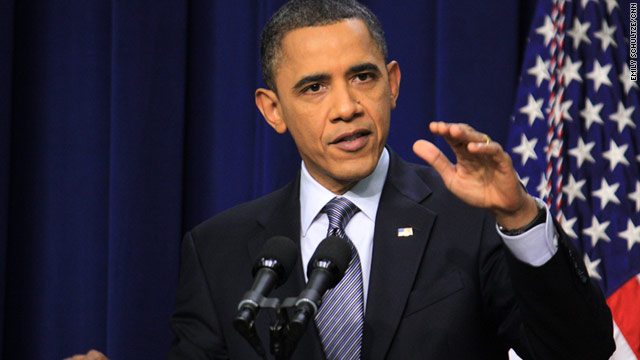
President Barack Obama may have chosen to locate his library in his adopted home state of Illinois, but a new move by Sen. Brian Schatz, D-Hawaii, suggests he may leave his biggest environmental footprint in his home state of Hawaii.
Schatz sent a letter Thursday to the president asking him to consider expanding the Papahānaumokuākea Marine National Monument, which President George W. Bush created a decade ago, to more than four times its current size of about 139,800 square miles. The area, which surrounds the uninhabited Northwestern Hawaiian Islands, is home to 7,000 marine and terrestrial species, a quarter of which are found nowhere else on earth.
Under Schatz’s proposal the monument would increase to 582,578 square miles, making it the largest area of protected land or sea on earth. When Bush created it on June 15, 2006, it represented the world’s largest marine reserve, but it now ranks as the 10th biggest.
The senator, who has emerged as a key broker between Hawaiian fishing and other local interests and the federal government, has included a carve-out in his proposal so recreational and subsistence fishing operators from Kaua’i and Ni’ihau can continue to use certain areas that are outside the monument’s current boundaries. An active fishing spot around the National Oceanic and Atmospheric Administration’s weather buoy 51101 would remain open, though all the areas within the expanded monument would be closed to fishing or other forms of exploitation such as deep-sea mining.
White House officials have been weighing an expansion of the monument, which Obama can do unilaterally under the 1906 Antiquities Act, and held a listening session out in Honolulu several weeks ago with state and county government leaders, Native Hawaiians, fishermen, scientists and environmental groups. The president is likely to make the designation at some point in the next few months, according to several individuals who have been briefed on the process but asked for anonymity because no final decision has been made.
A coalition of scientists, environmentalists and native Hawaiians have pressed for the expansion of the monument on the grounds that it can serve as a critical refuge for many species as climate change intensifies. University of Hawaii marine biologist Robert H. Richmond, a coral reef specialists, said in an interview that expanding protections around the archipelago will provide areas to which fish can migrate in a warming ocean and not face intense fishing pressures.
“Fishing fleets know they can pick off” fish as they migrate from a protected area to an unprotected one, he said, so expanding these areas provide corridors for safe passage. And because the reefs in the Northwestern Hawaiian Islands are among the northernmost coral reefs and are located in the temperate zone, he added, they more likely to survive future warming events predicted by present computer models.
“What we’re basically looking at is a kids’ game of tag, where a protected area is a home base,” Richmond said. “The larger home bases will protect more resources, and get better connectivity.”
Seth Horstmeyer, a director with The Pew Charitable Trusts’ Global Ocean Legacy project, noted in an email that half a dozen presidents have singled out the region for protection over the last century because of its unique resources.
It is one of the most significant strongholds for tropical seabirds on earth, and home to at least 90 percent of the remaining Hawaiian monk seals and Hawaiian green sea turtles on earth. It is also an important site for sharks, though longline vessels accidentally catch between 5,000 and 28,000 sharks a year in the Northwestern Hawaiian Islands, nearly all of which are dumped overboard, according to Pew.
“Six Presidents, starting with Theodore Roosevelt, have taken action to protect the Northwestern Hawaiian Islands, Horstmeyer said. “President Obama has the opportunity to continue this bipartisan effort by acting on this proposal and creating the world’s largest protected area.”
Schatz wrote the president that by expanding most of the monument out to the furthest reaches of U.S. maritime authority – 200 nautical miles from shore – while keeping one area confined to its current boundaries, the administration could address local concerns while also reflecting the latest scientific research. His plan would also give the Office of Hawaiian Affairs, an institution that represents the interests of native Hawaiians, a say in managing the protected area.
“A thoughtful expansion of the [monument] will continue Hawai’i’s long history of sustainable use of the land and oceans into the future, and help ensure that we can give our children the legacy of a healthy, vibrant Pacific Ocean,” he wrote.
Under the expansion outlined by Schatz some commercial fishing of tuna and other species would continue in the areas recreational and subsistence operators would have access to, but much of it would shift to international waters.
The enlarged area would provide additional protection for an iconic area for many native Hawaiians, some of whom continue to observe ancient wayfaring and voyaging practices in canoes, as well as the wreck of the aircraft carrier the USS Yorktown. The proposal would also encompass the site of the oldest living organism on earth, a black coral that dates back to the era where the Egyptians were building the Pyramids.
“We thank Senator Schatz for providing the maximum amount of protection while ensuring that small-boat fishermen can continue to access the areas that they have historically accessed,” William Aila Jr., a fisherman and founding member of the Northwestern Hawaiian Islands Coral Reef Ecosystem Reserve, said in a statement. “With this proposal the senator is providing President Obama with a bold plan that Hawai’i and the nation can be proud of.”
(c) 2016, The Washington Post · Juliet Eilperin

